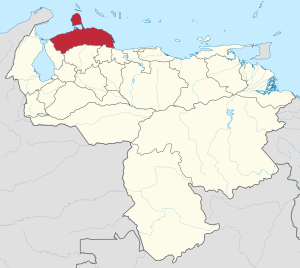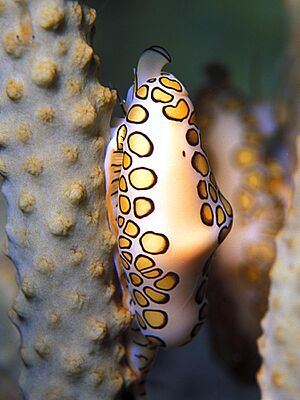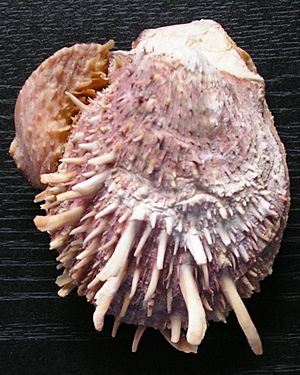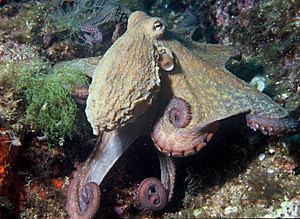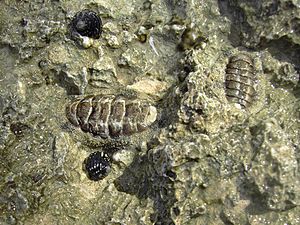List of molluscs of Falcón State, Venezuela facts for kids
Falcón State is a special place on the coast in the northwest part of Venezuela. It covers a huge area of about 24,800 square kilometers (that's about 9,575 square miles!). In 2010, nearly a million people lived there. Falcón State is also home to four amazing national parks: the Médanos de Coro National Park (famous for its sand dunes!), the Cueva de la Quebrada del Toro (a cool cave), Morrocoy (with beautiful beaches and islands), and Juan Crisóstomo Falcón National Park.
This state is a fantastic spot for finding many different kinds of molluscs. Molluscs are soft-bodied animals, often with a hard shell, like snails, clams, and even octopuses! You can find them on land, in freshwater, and especially in the ocean. Many of the marine molluscs here are similar to those found in other parts of the Caribbean Sea.
This article will introduce you to some of the interesting molluscs that call Falcón State home. We'll look at different groups, like snails, clams, and even squids!
Contents
Amazing Molluscs of Falcón State
Molluscs are a huge group of animals, and they come in many shapes and sizes. Scientists divide them into different classes based on their body structure. In Falcón State, you can find several of these classes.
Gastropods: The Snails and Slugs
Gastropods are the largest group of molluscs. This class includes all the snails and slugs, whether they live on land, in freshwater, or in the sea. They usually have a single, spiral shell, but some, like slugs, don't have an outer shell at all.
Land Snails
You can find land snails crawling around in Falcón State. One example is the Achatina fulica, also known as the Giant African Snail. It's a very large snail that was brought to Venezuela from other parts of the world.
- Achatina fulica
Another interesting land snail is Eudolichotis distorta. These snails are part of the Bulimulidae family, which are known for their varied shell shapes.
Freshwater Snails
Falcón State also has snails that live in rivers and lakes. The Ampullariidae family, often called apple snails, are common here. They are known for their round, apple-shaped shells.
- Marisa cornuarietis
- Pomacea glauca
Sea Snails
The ocean waters off Falcón State are full of sea snails! They come in all sorts of colors and patterns.
- Cone Snails: Conus puncticulatus and Conus mus are examples of cone snails. These snails are known for their cone-shaped shells and are sometimes venomous, so it's best to admire them from a distance.
- Triton's Trumpet: The Charonia variegata is a very large and beautiful sea snail from the Cymatiidae family. Its shell is often used as a trumpet!
- Queen Conch: The Strombus gigas is a famous and very large sea snail found in the Caribbean. It's known for its beautiful pink shell and is important to the local ecosystem.
- Flamingo Tongue Snail: The Cyphoma gibbosum is a small, colorful snail that lives on sea fans. Its bright spots are actually part of the snail's soft body, not its shell!
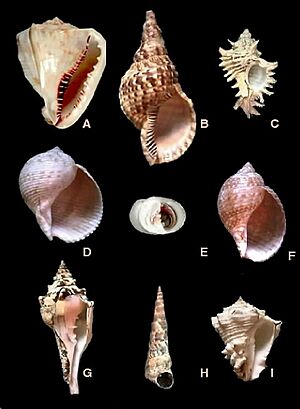
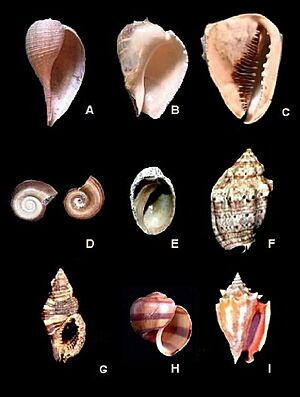


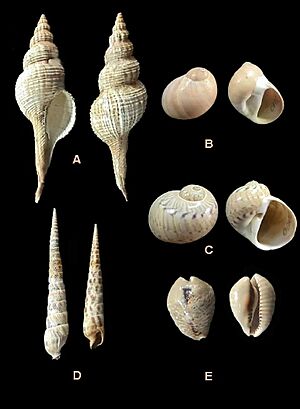
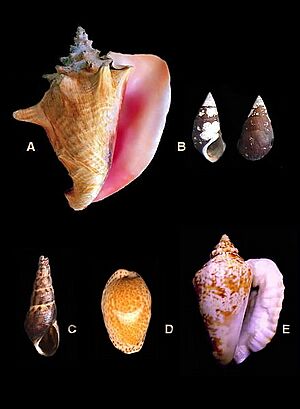
Bivalves: The Two-Shelled Wonders
Bivalves are molluscs that have two shells hinged together, like clams, oysters, and mussels. They don't have a head or a radula (a tongue-like organ found in many molluscs). Instead, they filter food from the water.
- Oysters: Crassostrea rhizophorae is a type of oyster found in Falcón State. Oysters are important for filtering water and are often eaten by people.
- Clams: Many types of clams live in the sandy and muddy bottoms of the sea. Donax denticulatus and Donax striatus are small, colorful clams often found on beaches.
- Scallops: Pecten ziczac and Lyropecten nodosus are types of scallops. Scallops are known for their beautiful, fan-shaped shells and their ability to "swim" by clapping their shells together.
- Ark Clams: Arca zebra and Anadara ovalis are examples of ark clams, which have ribbed shells and live attached to rocks or buried in sand.
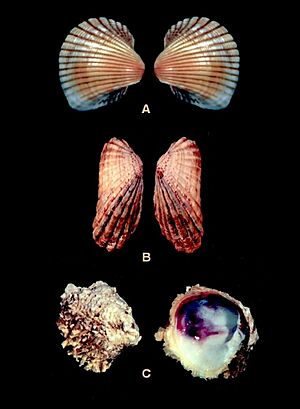
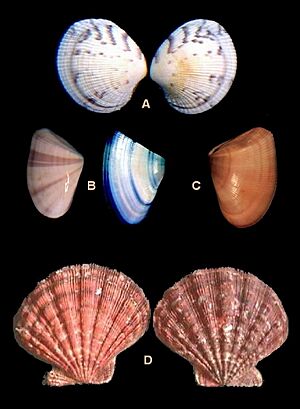
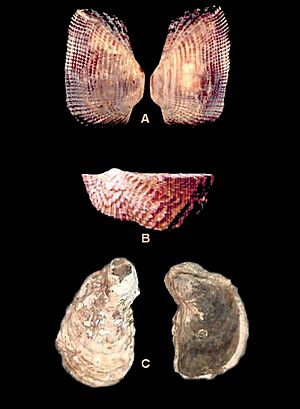


Cephalopods: The Smart Ones
Cephalopods are the most intelligent molluscs, including octopuses, squids, and cuttlefish. They have a distinct head, large eyes, and tentacles or arms.
- Octopuses: Octopus vulgaris, the common octopus, is found in the waters of Falcón State. Octopuses are amazing creatures known for their ability to change color and squeeze into small spaces.
- Squids: Loligo pealei and Sepioteuthis sepioidea are types of squids. Squids are fast swimmers and have a streamlined body, usually with ten arms.
Scaphopods: The Tusk Shells
Scaphopods are also called "tusk shells" because their shells are shaped like a tiny elephant's tusk. They live buried in sand or mud in the ocean, with the narrow end of their shell sticking up into the water.
- Dentalium laqueatum is an example of a tusk shell found here.
Polyplacophora: The Chitons
Chitons are marine molluscs that have eight shell plates on their back, which allows them to curl up for protection. They are often found clinging to rocks in the intertidal zone (the area between high and low tide).
- Acanthopleura granulata and Chiton tuberculatus are common chitons in Falcón State. They are sometimes called "sea cradles" or "coat-of-mail shells."
Falcón State's diverse habitats, from its coasts to its freshwater areas, make it a rich home for many different kinds of molluscs. Studying these creatures helps us understand the health of our planet's ecosystems.
See also
 In Spanish: Moluscos del estado Falcón para niños
In Spanish: Moluscos del estado Falcón para niños
- List of echinoderms of Venezuela
- List of Poriferans of Venezuela
- List of introduced molluscs of Venezuela
- List of marine molluscs of Venezuela
- List of non-marine molluscs of El Hatillo Municipality, Miranda, Venezuela
- List of non-marine molluscs of Venezuela
- List of birds of Venezuela
- List of mammals of Venezuela


